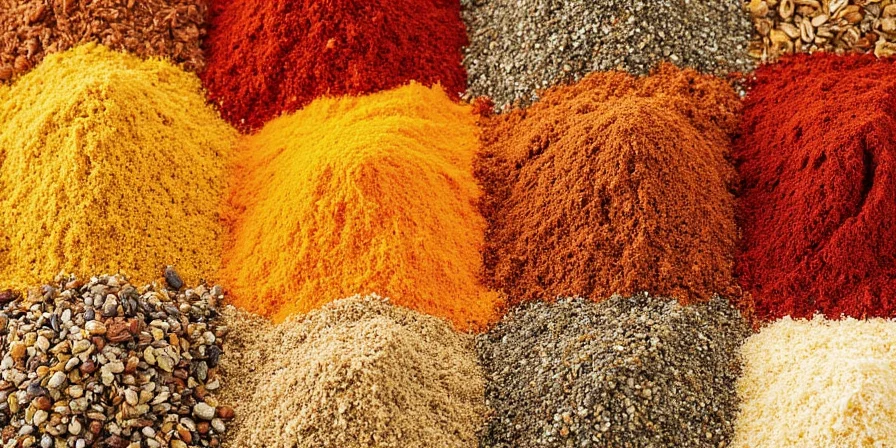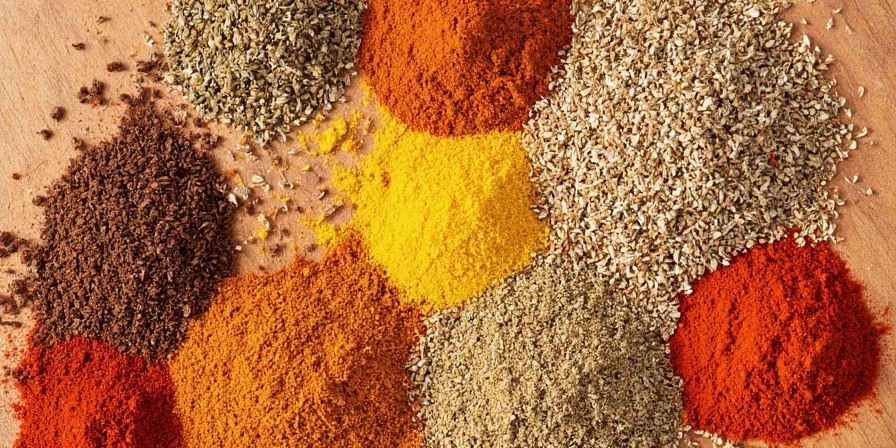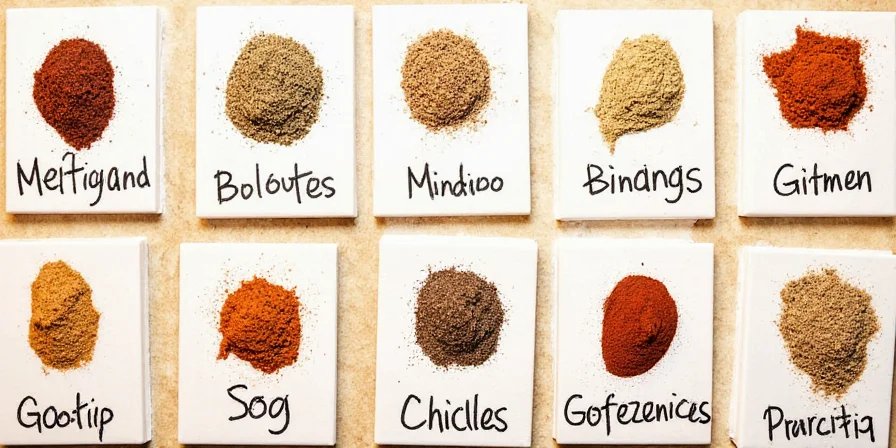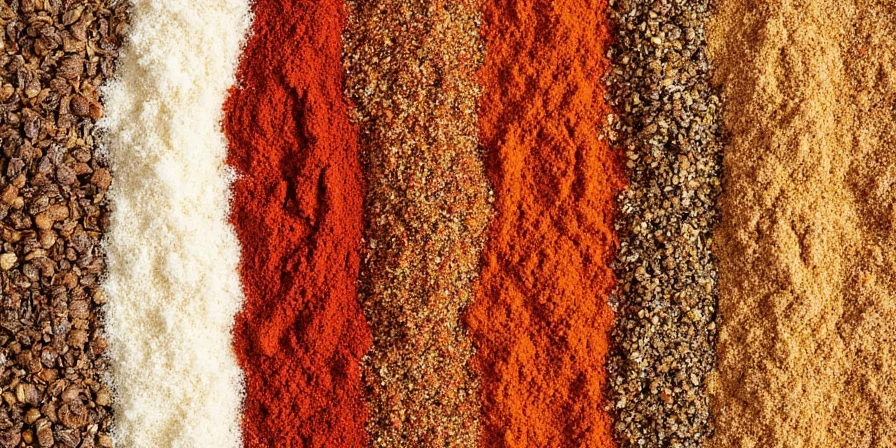If you're wondering which spices to buy first as a beginner cook, here's your immediate answer: Start with these 10 essential spices that form the foundation of 80% of global cuisines. For absolute beginners on a budget, prioritize salt, black pepper, garlic powder, paprika, and cumin - these five will cover most basic recipes without overwhelming your pantry.
Table of Contents
- Why These 10 Spices First?
- Essential Spices for Beginner Cooks
- Beginner-Friendly Spice Guide
- Simple Usage Tips for New Cooks
- Building Your Spice Collection
Why These 10 Spices First?
When starting your cooking journey, you don't need dozens of spices. These 10 essentials were selected based on recipe frequency analysis across beginner cookbooks and popular meal kits. They cover Mediterranean, Mexican, Indian, and American comfort foods - the most common cuisines beginners explore. Crucially, they're versatile enough that you'll use them repeatedly, preventing the "spice graveyard" phenomenon where expensive specialty spices go unused.
10 Essential Spices Every Beginner Should Own
- Salt – The flavor foundation (start with kosher salt)
- Black Pepper – Your daily flavor enhancer
- Garlic Powder – Consistent flavor without prep work
- Paprika – Adds color and mild warmth
- Cumin – Earthy base for chili and tacos
- Oregano – Essential for Italian and Greek dishes
- Cinnamon – Surprisingly useful in savory dishes
- Cayenne Pepper – Controlled heat for customization
- Ginger – Bright flavor for both sweet and savory
- Turmeric – Earthy base for curries and roasted veggies
Beginner Priority Tip: If budget is tight, buy these 5 first: salt, black pepper, garlic powder, paprika, and cumin. This core set costs under $15 and works for spaghetti, tacos, roasted vegetables, and basic soups.
Beginner-Friendly Spice Guide
| Spice | First Recipes to Try | Starter Measurement | Where to Buy Cheap | Common Beginner Mistake |
|---|---|---|---|---|
| Salt | All savory dishes | 1/4 tsp per cup of liquid | Grocery store bulk bins | Adding all at once instead of in stages |
| Black Pepper | Scrambled eggs, roasted potatoes | 1/8 tsp per serving | Basic supermarket brand | Using pre-ground instead of cracking fresh |
| Garlic Powder | Roasted chicken, tomato sauce | 1/2 tsp per pound of meat | Store brand | Substituting for fresh garlic 1:1 |
| Paprika | Deviled eggs, chili | 1/2 tsp per recipe | Economical bulk section | Using smoked paprika when regular is needed |
| Cumin | Taco seasoning, black bean soup | 1 tsp per pound of meat | International aisle store brand | Not toasting before use in dry rubs |
| Oregano | Pizza sauce, Greek salad dressing | 1/2 tsp per cup of sauce | Standard grocery brand | Adding too early in cooking |
| Cinnamon | Oatmeal, apple crisp | 1/4 tsp for sweet dishes | Store-brand ground | Using in spaghetti sauce (doesn't belong!) |
| Cayenne Pepper | Buffalo sauce, chili | Pinch (1/16 tsp) to start | Economical spice brand | Adding too much at once |
| Ginger | Stir-fry, cookie dough | 1/2 tsp ground per recipe | Store brand ground | Confusing ground with fresh measurements |
| Turmeric | Rice dishes, roasted cauliflower | 1/4 tsp per recipe | Standard grocery brand | Not pairing with black pepper for absorption |
Simple Usage Tips for New Cooks
These beginner-friendly techniques make spice use foolproof:
1. The Starter Measurement System
Forget complicated ratios. For your first 20 recipes, use these simple measurements:
- Per pound of protein: 1 tsp garlic powder + 1/2 tsp paprika + 1/4 tsp cumin
- Per cup of sauce: 1/2 tsp oregano + 1/4 tsp black pepper
- For sweet dishes: 1/4 tsp cinnamon + pinch of nutmeg

2. Budget Shopping Guide
- Buy store brands: For basics like salt and pepper, generic brands work perfectly
- Start small: Purchase 1-ounce containers instead of family size
- Check expiration dates: Spices lose potency after 2 years - look for recent dates
- Freeze extras: Whole spices stay fresh longer in freezer storage

3. The 5-Minute Flavor Test
Can't tell if your spices are still good? This beginner method works:
- Pour 1/4 tsp into a white bowl
- Smell directly - fresh spices have strong aroma
- Add to hot oil - fresh spices sizzle immediately
- Compare color to new spices if possible

4. Beginner-Friendly Regional Blends
Make these simple blends with your starter spices:
- Taco Seasoning: 2 tbsp chili powder (or 1 tbsp paprika + 1 tsp cumin), 1 tsp garlic powder, 1/2 tsp oregano
- Italian Blend: 2 tbsp dried basil, 1 tbsp oregano, 1 tsp garlic powder
- Simple Curry Powder: 2 tbsp turmeric, 1 tbsp cumin, 1 tsp coriander (if you have it)

Building Your Spice Collection
Start with the core five spices (salt, pepper, garlic powder, paprika, cumin) and expand as you cook specific cuisines. Replace spices every 2 years for best flavor - set a phone reminder for replacement time. Remember: proper storage in airtight containers away from light preserves potency. Most importantly, don't feel pressured to buy everything at once - build your collection recipe by recipe.
As you gain confidence, add specialty spices for specific dishes you love. But for your first 50 meals, these 10 essentials will serve you well across most beginner recipes. The "mystery spice" question? That's usually coriander, which tastes like soap to 20% of people due to genetic differences.
Now you're equipped to cook with confidence - no more guessing which spices matter most for everyday cooking.

Frequently Asked Questions
What are the absolute minimum spices I need to start cooking?
Start with just five: kosher salt, black pepper, garlic powder, paprika, and cumin. This core set costs under $15 and works for spaghetti, tacos, roasted vegetables, and basic soups - covering most beginner recipes. Add oregano and cinnamon as you explore Italian and baking recipes.
How can beginners tell if spices are still good?
Use this simple test: pour 1/4 tsp into a white bowl, smell directly (fresh spices have strong aroma), and add to hot oil (fresh spices sizzle immediately). Ground spices lose 40% potency within 6 months at room temperature. If no strong scent or color change, replace them.
Can I substitute fresh spices for dried in beginner recipes?
Generally use 3x more fresh than dried (e.g., 1 tsp dried = 1 tbsp fresh). But for beginners, stick to dried spices initially - they're more consistent and forgiving. Fresh and dried versions contain different compounds, so substitutions work best in moist applications like curries, not dry rubs. Start with dried versions for better results.
What's the most common spice mistake beginners make?
The top beginner mistake is adding all spices at the beginning of cooking. Delicate herbs like oregano lose flavor with long cooking, while spices like cumin need time to bloom. Add dried herbs in the last 10 minutes, and earthy spices like cumin in the first 5 minutes of cooking. Start with smaller amounts - you can always add more, but you can't remove excess.











 浙公网安备
33010002000092号
浙公网安备
33010002000092号 浙B2-20120091-4
浙B2-20120091-4